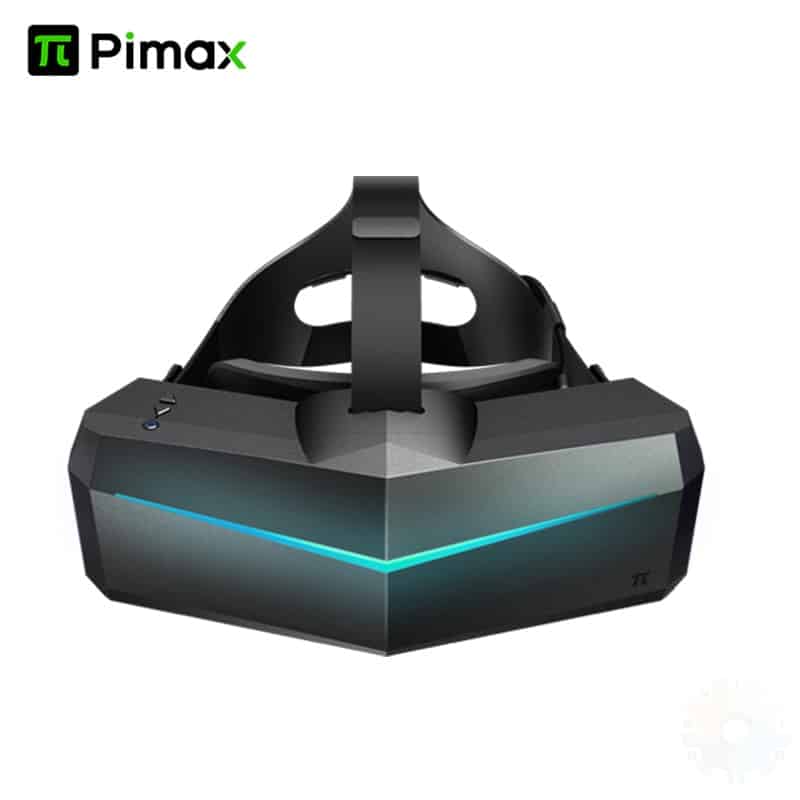The haptic feedback on virtual reality and windows mixed reality is improving rapidly. It seems that we can now create the sensation of texture in virtual reality to a much higher fidelity than in the past. We are also working on touch and smell, using advanced olfaction systems for VR immersion. This is where our genitals come in, in all shapes and sizes.
We are also working on creating environments with higher fidelity than real life. While just like virtual reality, we cannot simulate everything, as physics laws will limit us in some areas (particularly if we want to create an environment that is similar to Earth), there are many things we can do.
“VR Tech is Getting “Steamy”
– WMR Reviews Team
It seems that our goal is to create a world that feels real enough so that when we place people in it, they feel the sensations of the environment. These environments will be very diverse and interactive. With haptic feedback, it gives our human senses extra ways to feel these video games and new ways to interact with them.

Haptic Feedback VR Now With “Analog” Input
With this technology, we will be able to create experiences that are not possible in the real world. This can include simulated versions of outer space with various planets and other celestial bodies or recreations of historical events.
With the advancement of virtual reality, we will be able to create an environment where people can experience various things and scenarios, just like in a video game. However, several issues need to be addressed. First, the olfaction will probably not be as good as real-life itself due to technology and practicality limitations. While there are some fully functional smell based feedback equipment for gamers, let’s not get distracted from the real prize. We know we want haptic feedback for our family jewels, but we never realized it would be analog, not digital.
“Haptic feedback for our family jewels will be analog, not digital.”
– WMR Reviews Team
There are many ways in which haptic feedback can be implemented in virtual reality. One example is using a touch-based interface, where a user interfaces directly with the system using different input devices such as keyboards; mouse and keyboard combinations, touchscreen interfaces like iPad’s; Leapmotion, etc. Another way of approaching haptic feedback is by the use of wearable devices. An example would be a smartwatch that provides tactile feedback for your phone or another mobile device. Another could be a modern twist of a “joystick” that vibrates according to the game that you control via your front or rear holes instead, or in addition, to a typical controller in your hands. Maybe one day they will vibrate as well. Talk about an Oculus “quest”, this VR tech is getting “steamy”!
DID YOU KNOW?
There Are Already VR Headsets with 4k and even 5k Resolution at 120hz! They Are More Powerful Than Both Valve Index & Quest 2:
( Yes, They Work With SteamVR! )

#1 Best Overall VR Headset – Pimax 5K
This is the best overall WMR VR Headset that most people with a gaming machine will be able to run. It matches or exceeds the Valve Index in every way, at half the price.
The Pimax 5K Ultrawide will be able to run any VR Game from the Steam library on maximum graphics, and the limiting factor will definitely be your graphics card.
- 5K (Yes, Double the Index) – 200* Field of View
- Dual-Samsung OLED Screens(UltraBlack)
- Competitive Pricing, 90 Hertz
- Build-in SteamVR Tracking and G-Sensor
VR Games, VR Movies, VR Interloping: Erecting the Hardware
Yet another way of approaching haptic feedback is to implement it in the hardware. For example, if you insert a computer mouse into a system with haptic feedback capabilities, it will provide for some fairly advanced features.
There is also the question of using haptic feedback in conjunction with other forms of input. For example, if you are playing a video game and there is a gun that recoils upon firing, it uses both visual effects and tactile feedback to make the experience more immersive.
Finally, another way to implement haptic feedback is through the use of touch-based interfaces. For example, you can use your smartphone as a remote control for your computer and provide tactile feedback.
Overall, haptic feedback is improving rapidly and will only get better in the future. That’s my opinion, at least. Where things get interesting is when you use this hardware to interact with your favorite midnight movies! In the gaming department, there are already some quite shoddy attempts to create an equally entertaining VR approach: but the big money hasn’t come yet. All the current VR games made for your midnight muscles are independent adventures of very driven individuals. The graphics are lame, and the hardware of tomorrow is the last thing on their mind.
I would say that the haptic feedback on virtual reality is improving rapidly, but rather it has improved very narrowly. The difference between these two phrases is minute grammatical nuances, which have dramatic implications for the definition and meaning of words. In short, ‘rapidly’ describes an action or event happening quickly over a short period, while ‘narrowly’ describes the fact that designers and engineers have mostly been focusing on our hands and heads, instead of the genitals. Share this article if you want to raise awareness!
Full Body Haptic Feedback Suits Are VR Dreams Come True
In the case of haptic feedback bodysuits, it is an event that has happened over many a man’s futuristic dreams. Thus, I would argue that ‘inevitable’ is a more appropriate description for this, even for Windows Mixed Reality. Now, if you were to promote the hardware focus for our genitals in a mature in a positive manner like we are, all of that might change.
Secondly, the sooner this VR suits become real, perhaps real world crime could even be reduced! Is it improving from an absolute point of view or relative to other technologies in raw statistics? It is not clear whether you are talking about improvements to haptic feedback than older types of virtual reality or rather when it will catch up with newer forms of VR. We can’t ignore the fact that some potential criminals might not bother commiting a crime if they could feed their urges in Virtual Reality, or perhaps even Windows Mixed Reality? Are we comparing how long before a hand-held device can give us tactile feedback comparable to VR gloves, or are we merely trying to understand if haptic feedback has dawned on our nuts and bolts?
Conclusion: The Future is Coming
Finally, the seemingly inevitable future of this tech should make you giddy with happiness. This is a statement of faith and not based on fact or evidence, as it assumes we survive to this future point in time. That’s quite an assumption. There has been rapid improvement in this technology for all intents and purposes, but at what point does an event become fast enough to be considered successful? And if it never reaches this threshold, then would we consider its progress as slow? Yes, we’re gamers, and we are never satisfied. That’s the beauty of it though, it forces the industry into a constant state of improvement and growth, while providing a job market to ourselves to not fall too far away from the greater society.
Ultimately, the word ‘society’ used in this context has multiple meanings and can be interpreted differently. We clearly do live in a society. This is problematic because it creates ambiguity and confusion that may lead to a misinterpretation of what you are trying to say. I hope that my in-depth analysis has provided you with a greater understanding of the word ‘analog haptic feedback’ and how it can be interpreted. If you have any questions, then please feel free to ask.
